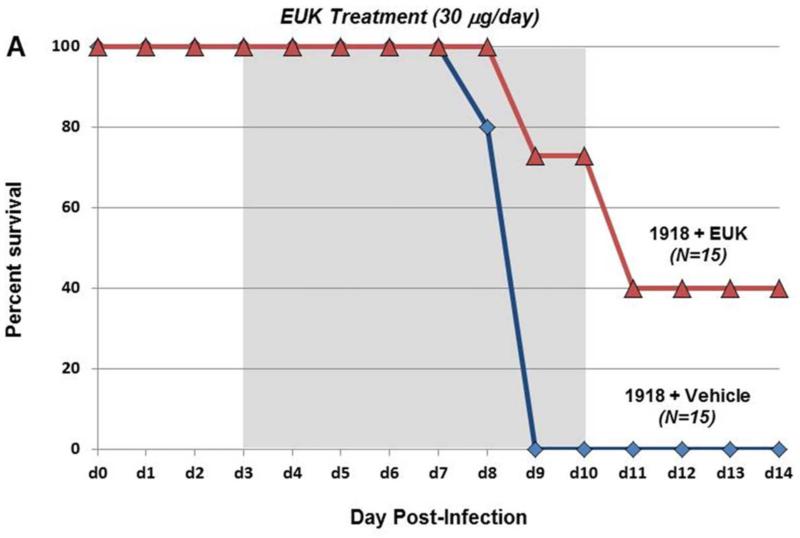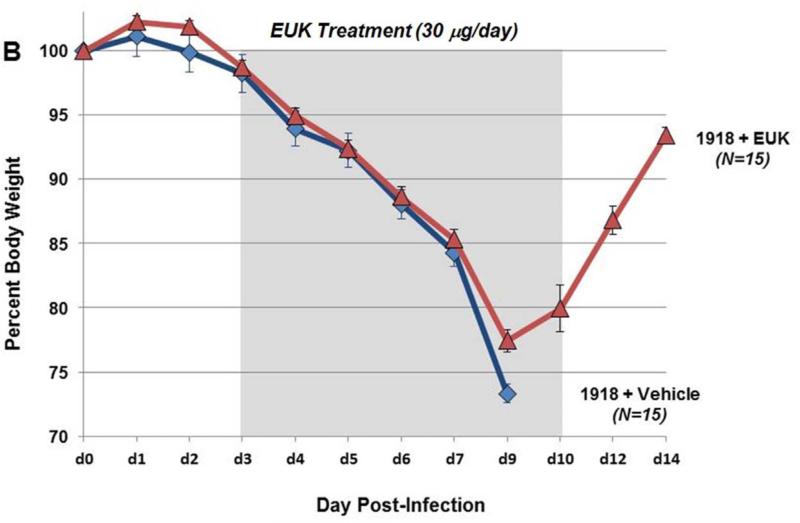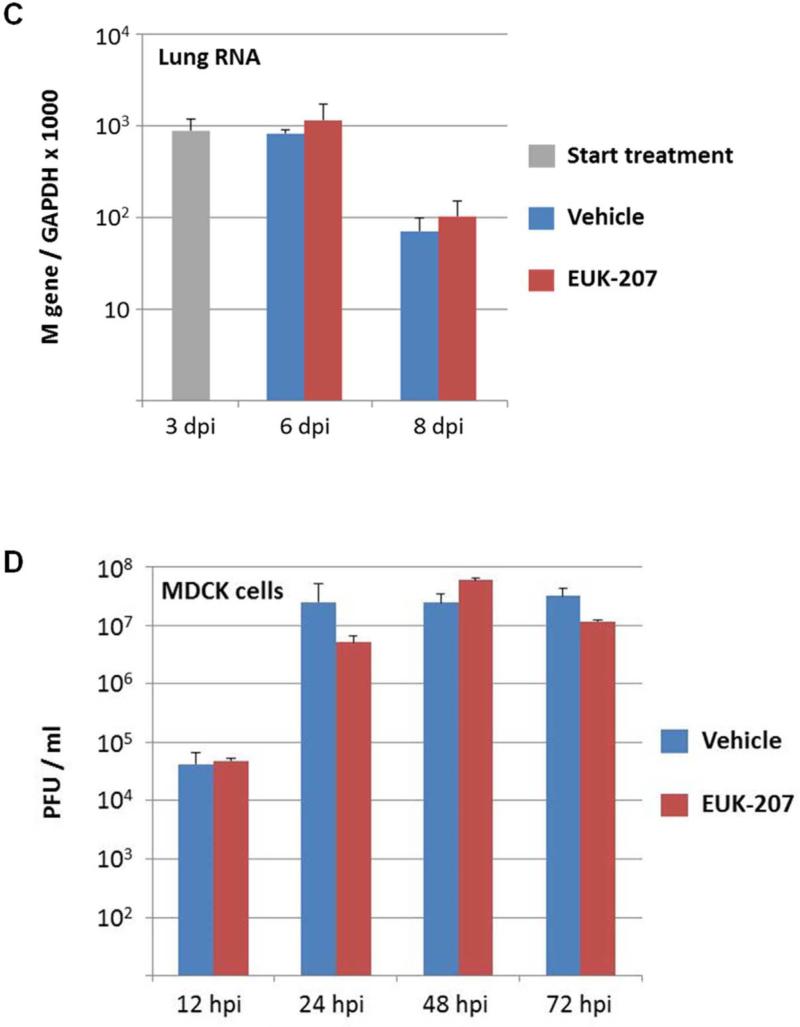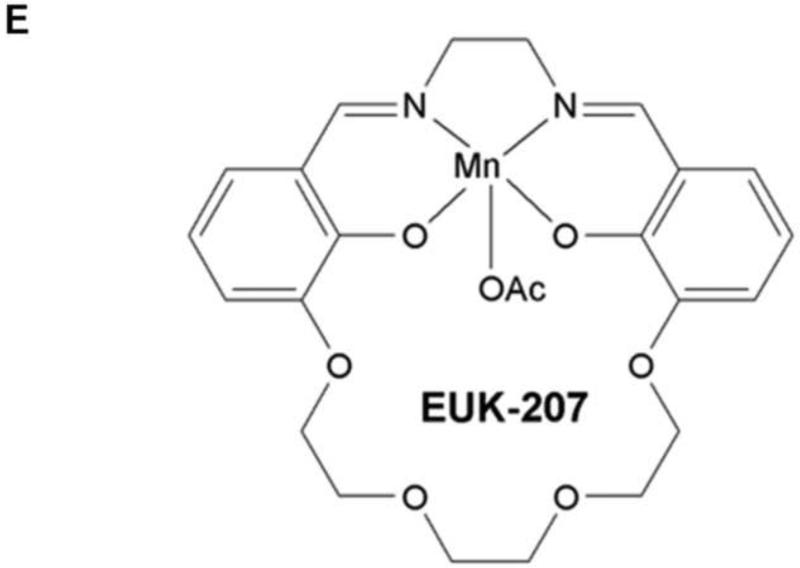Fig. 1. EUK-207 treatment increases survival in 1918 influenza virus infected mice.
(A) Survival curves for EUK-207- and vehicle treatment during 1918 influenza virus infection. Administration of vehicle and drug by IP injection occurred on 3 to 10 dpi. (B) Weight loss during 1918 influenza virus infection in vehicle and EUK-207-treated mice. Data presented are from single experiment with 15 animals per group infected with 500 PFU (4x LD50) of the 1918 influenza virus, and are representative of 3 independent experiments with total N=69 for EUK-207-treated groups and N=55 for vehicle-treated groups. (C) Measurement of influenza M gene mRNA by qRT-PCR relative to GAPDH mRNA at 3 (onset of treatment), 6 and 8 dpi. Data are presented as average expression values ± standard deviation. (D) Viral replicatior kinetics in MDCK cells in the presence and absence of EUK-207 treatment. MDCK cells were infected with an MOI=0.01 and were cultured continuously in the presence or absence of 1.5 μg/ml EUK-207, as described in Materials and Methods. At 12h, 24h, 48h and 72h post-infection virus present in the supernatant was quantified by plaque assay. Kinetics were performed in triplicate and data are presented as mean ± standard deviation. (E) Chemical structure of EUK-207. The axial ligand, “OAc”, is an acetoxy group.




